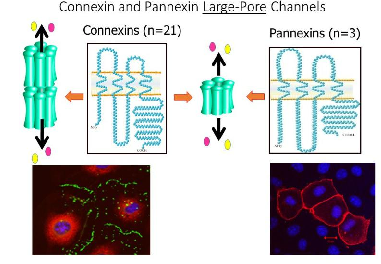
Dale W Laird
The University of Western Ontario, Canada
Title: Connexin and Pannexin large-pore channels as potential therapeutic targets in drug discovery
Biography
Biography: Dale W Laird
Abstract
The connexin and pannexin families of large-pore forming channel proteins facilitate the passage of various ions, metabolites, and signaling molecules between cellular cytoplasms, either through extrusion into the extracellular milieu, or in the case of connexins, directly between cells. Connexins may functionally overlap with the activities of pannexin channels by participating in intercellular signaling by generating functional hemichannels at the cell surface, although this is not well documented in vivo. Connexin expression and regulation is tightly correlated with cancer onset and progression while mutations in half of the genes that encode the 21 member connexin gene family lead to over two dozen diseases ranging in severity from manageable developmental abnormalities to life-shortening organ failure. Our laboratory used tissue-relevant cells, primary cells, organotypic cultures, mouse models of human disease and induced pluripotent stem cells from connexin-linked disease patients to uncover ten distinct mechanisms by which connexin gene mutations cause disease. These mechanisms are subdivided into both gain- and loss- of function mutations. Once mechanistic information is known as to how mutant connexins cause disease, long-term goals include developing strategies to compensate for cellular defects triggered by these mutants. Complementary to these connexin studies, pannexin expression levels and regulation has been linked to over a dozen diseases that affect most of the major organs in the human anatomy. Since these channels function at the cell surface and pannexin polypeptide domains are exposed to the extracellular surface, they represent potentially druggable targets. This presentation will discuss pannexins and connexins as therapeutic targets in disease treatment. Funded by the Canadian Institutes of Health Research.

Figure 1: Schematic of connexins arranged into an intercellular gap junction channel (gap junctions denoted in green at points of cell -cell apposition) and hemichannels. Pannexins form a single membrane channel and appear dispersed throughout the plasma membrane when expressed in cells (red). Both connexin and pannexin channels allow for the passage of small molecules <1000 daltons.
Recent Publications:
D.W. Laird, C.C. Naus and P.D. Lampe (2017) “SnapShot: Connexins and disease”, Cell 170: 1260-1260e1.
E.R. Press, Q. Shao, J.J. Kelly, K. Chin, A. Alaga and D.W. Laird (2017) “Induction of cell death and gain-of-function properties of connexin26 mutants predict severity of skin disorders and hearing loss” Journal of Biological Chemistry 292: 9721-9732.
J.L. Esseltine, Q. Shao, C. Brooks, J. Sampson, D. Betts, C. Seguin and D.W. Laird (2017) “Connexin43 mutant patient-derived induced pluripotent stem cells exhibit altered differentiation potential” Journal of Bone and Mineral Research 32: 1368-1385. Selected for Journal Cover.
J. Esseltine and D.W. Laird (2016) “Next-generation connexin and pannexin biology” Trends in Cell Biology 26: 944-955.
T. Aasen, M. Mesnil, C.C. Naus, P.D. Lampe and D.W. Laird (2016) “Gap junctions and cancer: Communicating for
50 years” Nature Reviews Cancer 16: 775-788. Article selected for cover illustration.
